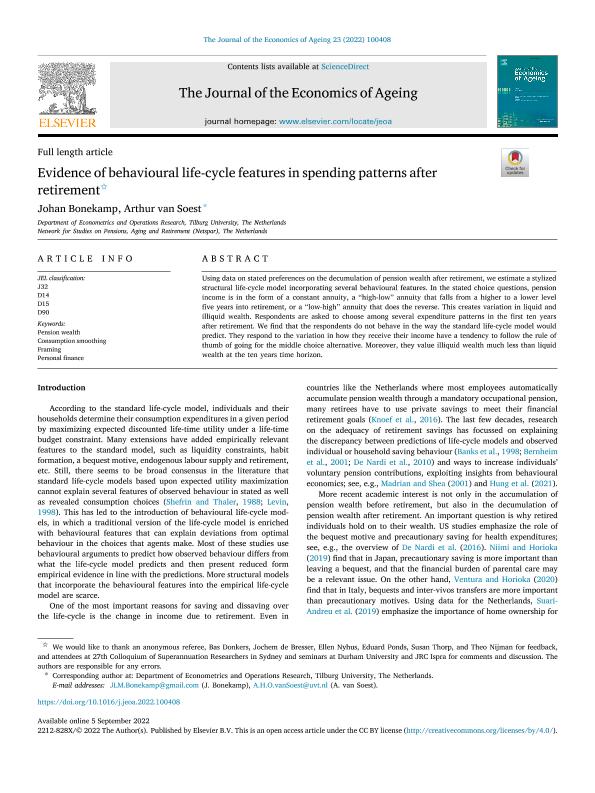| LDR | | | 00000cab a2200000 4500 |
| 001 | | | MAP20220034395 |
| 003 | | | MAP |
| 005 | | | 20221122092204.0 |
| 008 | | | 221122e20221031esp|||p |0|||b|spa d |
| 040 | | | $aMAP$bspa$dMAP |
| 084 | | | $a931.2 |
| 245 | 0 | 0 | $aEvidence of behavioural life-cycle features in spending patterns after retirement$cJohan Bonekamp...[et.al] |
| 520 | | | $aUsing data on stated preferences on the decumulation of pension wealth after retirement, we estimate a stylized structural life-cycle model incorporating several behavioural features. In the stated choice questions, pension income is in the form of a constant annuity, a high-low annuity that falls from a higher to a lower level five years into retirement, or a low-high annuity that does the reverse. This creates variation in liquid and illiquid wealth. Respondents are asked to choose among several expenditure patterns in the first ten years after retirement. We find that the respondents do not behave in the way the standard life-cycle model would predict. They respond to the variation in how they receive their income have a tendency to follow the rule of thumb of going for the middle choice alternative. Moreover, they value illiquid wealth much less than liquid wealth at the ten years time horizon.
|
| 540 | | | $aLa copia digital se distribuye bajo licencia "Attribution 4.0 International (CC BY 4.0)"$f$uhttps://creativecommons.org/licenses/by/4.0$943 |
| 650 | | 4 | $0MAPA20080554927$aJubilación |
| 650 | | 4 | $0MAPA20080552114$aPensiones |
| 773 | 0 | | $wMAP20210010194$g31/10/2022 Volumen 23 - 2022 , 13 p.$tThe Journal of the economics of ageing $dOxford : Elsevier ScienceDirect, 2021- |
| 856 | | | $qapplication/pdf$w1118225$yRecurso electrónico / Electronic resource |


